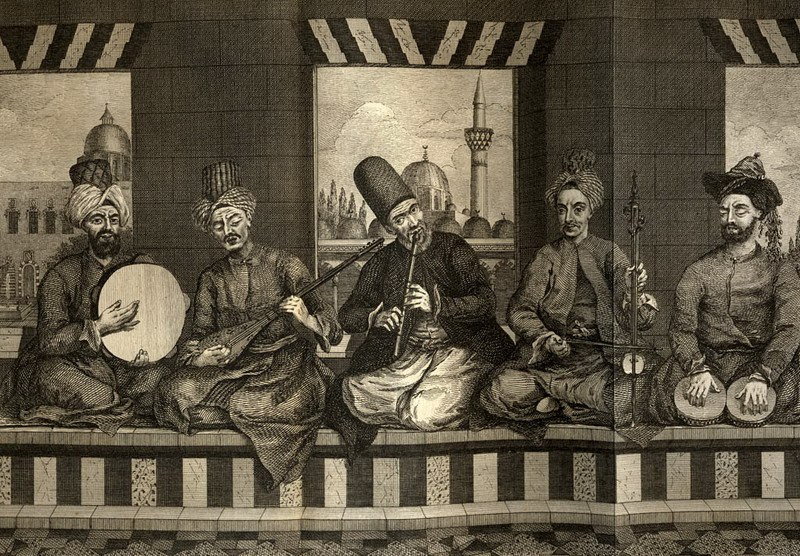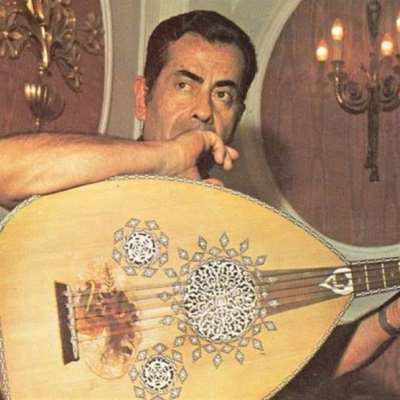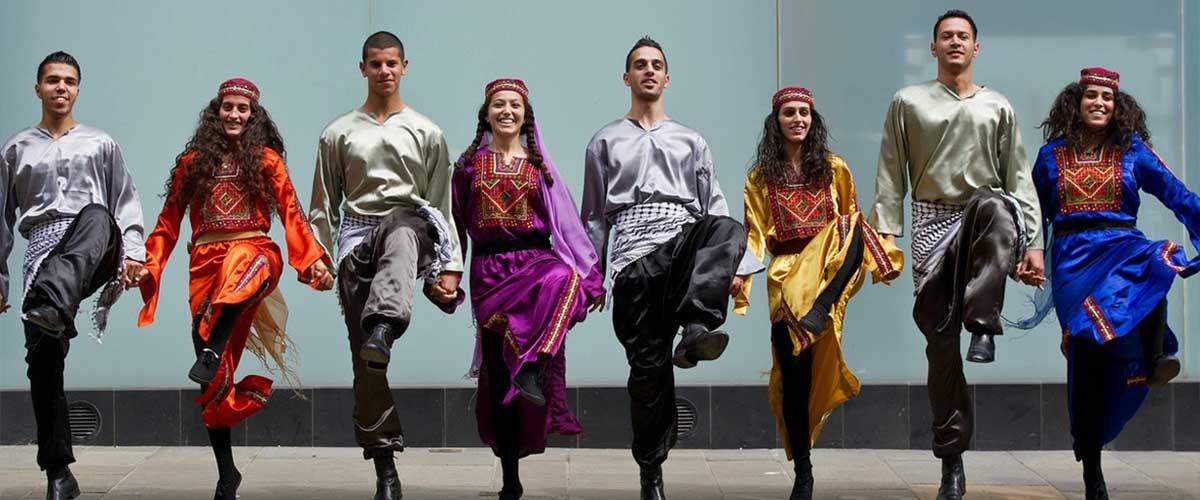My family’s musical heritage
Since my early childhood, my parents and especially my grandparents have taught me that music is an essential part of our culture. I agree with them because growing up, I have realized how much it influenced my identity. That is why I knew what music they liked most of all, even before I interviewed them. I still asked them some questions about their preferences and how much music means to their cultural identity and found out the two main genres of music they prefer and listen to most often. The first one is Arabic music, encompassing the Takht ensemble and Tarab genre, and the second is Dabke, which refers both to the dance and the music that accompanies it.
Takht ensemble
Takht is a traditional Arab ensemble that became popular at the beginning of the 18th century and consists of the ‘oud, the qanun, the kamanjah, the ney, the riq, and the darbuka (El-Shawan, 1984). You can see all of these instruments on the slide. Like all Arab music, the Takht ensemble is common in parts of the Arab Peninsula, North Africa, the eastern Mediterranean, and the Middle East, as well as among diasporic communities in the US, Europe, and elsewhere (Lawrence University, n.d.).

In my family, we often see and listen to performances that are accompanied by the Takht ensemble. It is an integral part of all celebrations, such as weddings, family gatherings, graduations, and other parties. Picnics and vacation days also include Takht music: that is why I associate celebrations and other important occasions with it.
Tarab (Taarab)
In Arab culture, Arab, or taarab, refers to both the art of music and the emotional effect it has on people. Words like “ecstasy,” “excitement,” or “enchantment” can be used to describe the meaning of the word “tarab.” A. J. Racy explains the term “as full of subtlety and layered meanings, both historical and regional” (Racy, 2014, p. 14).

As a musical effect, it has a deep relationship with the listener, evoking “intense emotions, exaltation, a sense of yearning or absorption, feeling of timelessness, elation or rapturous delight” (Racy, 2014, p. 18).
I can say that this description best explains what tarab means to my family and me. I feel grateful for belonging to the Arabic culture and being able to enjoy this fascinating meditative experience. My grandparents and parents can play some instruments that are a part of Tarab, such as the oud and the qanun, so it has been a part of our household tradition for as long as I can remember. Most of all, however, my family likes to sing, and so do I. Like the Takht ensemble music, Tarab music is played on various occasions and celebrations, and we often sing along. Our favorite artists of Tarab music are Oum Kalthoum, Farid al-Atrash, and Abdel Halim Hafez, which are all famous Egyptian singers that have made a major contribution to the Arabic art of music. My parents have listened to them since I was a child, so these singers have influenced my music preferences immensely. Because of them, the main things I value in music and in singing styles are honesty and genuineness. These people were genuinely passionate about music, and it is always seen in the way they perform. I realize now that the main reason why I dislike certain singers or genres is that they seem too pretentious and showy to me in comparison to the legends that my family has introduced me to.
Dabke (the dance and the music)
Dabke music is another genre that my family and I often listen to. It originates from an Arabic folk dance of the same name. When the Dabke dance was first created, it was common among the people living in villages in “Lebanon, Syria, Palestine, Jordan, Iraq, and some quasi-bedouin tribes that were living in nearby territories” (“Dabke – an Arabic folk dance,” 2013). The dancing tradition has been passed through many generations and is still performed in almost every household in Lebanon and other Arab countries on every celebration and other joyous occasions. In my family, we listen to Dabke at different family parties, when there is also the dance performed. Even when we do not have any events that involve dancing, we listen to the music itself, because it is very festive and can improve everyone’s mood. The tradition of this exuberant, expressive dance has influenced me a lot. It has helped to shape my understanding of love and unity: all the people coming together to join in this joyful form of dancing. This is what family gatherings are to me: people who are together and, therefore, happy.
Dabke, in its modern interpretation
Nowadays, the dance is usually performed with all the dancers standing in a line.
It starts with a musician playing a solo, and then the dancers join the melody and move together to create a synchronized movement and step. They step with the left foot and right foot and then cross the left foot and right foot over.

The influence of Arabic music on my identity
The music heritage that my family handed me has significantly and positively influenced the way I view the world. All kinds of Arabic music have shaped my identity and made me the way I am. For instance, when I listen to any other type of music, I always bring my Arabic identity to the other song. When I dance, I tend to use Dabke elements, such as stepping. When I sing, I may use quarter tones in compositions that only have whole or semi-tones, which is characteristic of the Takht ensemble music but not as common in Western music. The way we celebrate different occasions is also the closest to me. While I do enjoy visiting events that are not connected with my culture, Arabic celebrations still make me feel happier, more involved, and at home.
References
Arab America. (2019). What is Tarab and why is it important to Arab music?
El-Shawan, S. (1984). Traditional Arab music ensembles in Egypt since 1967: “The continuity of tradition within a contemporary framework”? Ethnomusicology, 28(2), 271.
Lawrence University. (n.d.). Michigan Arab orchestra Takht ensemble | Lawrence University.
Qatar Foundation International. (2018). Infographic: The traditional Arab ensemble. Web.
Racy, A. J. (2004). Making music in the Arab World: The culture and artistry of Tarab. Cambridge University Press.
The dabke-an Arabic folk dance. (2013). History and Development of Dance.